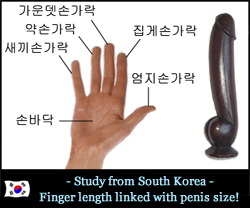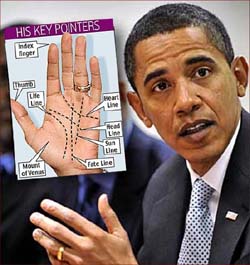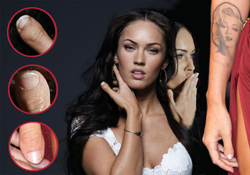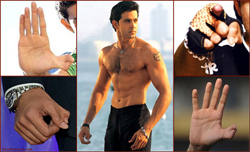Hand anthropometry from Leonardo da Vinci’s ‘Vitrian Man’!
June 1, 2011
The ‘Vitruvian Man’ – Leonardo da Vinci‘s famous drawing from the year 1487 – can be described as one of the earliest sources presenting guidelines for hand anthropometry. Today, plays hand anthropometry a considerable role in the fields of design, ergonomics, and even architecture! An update presenting data from e.g. the NASA and the US army.
The drawing, which is in pen and ink on paper, depicts a male figure in two superimposed positions with his arms and legs apart and simultaneously inscribed in a circle and square. The drawing and text are sometimes called the Canon of Proportions or, less often, Proportions of Man.
Interestingly, Leonardo’s comments for the proportions of th e ‘Vitruvian Man‘ includes a few passage where the hands and fingers are mentioned, quote:
“For the human body is so designed by nature that the face, from the chin to the top of the forehead and the lowest roots of the hair, is a tenth part of the whole height; the open hand from the wrist to the tip of the middle finger is just the same; the head from the chin to the crown is an eighth, and with the neck and shoulder from the top of the breast to the lowest roots of the hair is a sixth; from the middle of the breast to the summit of the crown is a fourth. If we take the height of the face itself, the distance from the bottom of the chin to the under side of the nostrils is one third of it; the nose from the under side of the nostrils to a line between the eyebrows is the same; from there to the lowest roots of the hair is also a third, comprising the forehead. The length of the foot is one sixth of the height of the body; of the forearm, one fourth; and the breadth of the breast is also one fourth. The other members, too, have their own symmetrical proportions, and it was by employing them that the famous painters and sculptors of antiquity attained to great and endless renown. Similarly, in the members of a temple there ought to be the greatest harmony in the symmetrical relations of the different parts to the general magnitude of the whole. Then again, in the human body the central point is naturally the navel. For if a man be placed flat on his back, with his hands and feet extended, and a pair of compasses centred at his navel, the fingers and toes of his two hands and feet will touch the circumference of a circle described therefrom. And just as the human body yields a circular outline, so too a square figure may be found from it. For if we measure the distance from the soles of the feet to the top of the head, and then apply that measure to the outstretched arms, the breadth will be found to be the same as the height, as in the case of plane surfaces which are perfectly square.”

'Study of arms and hands' - another drawing by Leonardo da Vinci.
Leonardo da Vinci’s comment about the proportion of the average hand was quite right, but the field of anthropometry has later developed more precise methods in order to describe the most important individual variations concerning the human body. Various sources of anthropometric hand data indicate the average hand length is close to 11% of body height (usually slightly smaller). Leonardo’s ‘Study of arms and hands’ is another of his drawings.
–
–
ANTHROPOMETRY TODAY:
Today, anthropometry plays an important role in industrial design, clothing design, ergonomics and architecture where statistical data about the distribution of body dimensions in the population are used to optimize products.
DATA FROM THE NASA & US ARMY:
In the last decade of the 20 century reports became available developed by the NASA & the US army – which include data for at least 20 characteristics of the human hand shape, including e.g. hand length, hand breadth & finger length. The data in the picture above represents static human physical characteristics of the adult hand, presented in 2000 by the Department of Defense Human Factors Engineering Technical Advisory Group.
The picture below presents at the bottom some average data based on German, UK & American populations – which provide useful ‘points of reference’ in the perspective of biometry & Multi-Perspective Palm Reading.
Finally, regarding Leonardo da Vinci it might be interesting to notice here that in 2008 a report was published describing characteristics of his fingerprint:
http://www.handresearch.com/news/leonardo-da-vinci-fingerprint.htm



 Finger length & penis size linked!
Finger length & penis size linked! The hands of Barack Obama
The hands of Barack Obama Megan Fox thumbs – TRIBUTE
Megan Fox thumbs – TRIBUTE Hrithik Roshan thumbs – TRIBUTE
Hrithik Roshan thumbs – TRIBUTE Hand Reading Research!
Hand Reading Research! MultiPerspective Palm Reading
MultiPerspective Palm Reading